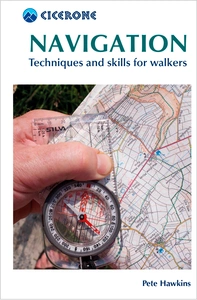The Night Sky: Crux - A Distinctive Cross in the Southern Sky
Night Sky expert Brian Jones discusses the constellation Crux. He describes how to locate it, its history and other interesting details for the backyard astronomer.
The tiny but conspicuous constellation of Crux has long been a source of inspiration to those journeying south. The German explorer Friedrich Wilhelm Heinrich Alexander von Humboldt who, presumably during his Latin American expedition in 1799, noted that ‘We saw distinctly, for the first time, the Cross of the South, on the night of the fourth and fifth of July, in the sixteenth degree of latitude. . . The pleasure felt on discovering the Southern Cross was warmly shared by such of the crew as had lived in the colonies. In the solitude of the seas we hail a star as a friend, from whom we have been long separated.’ His response is typical those aroused by the sight of the Cross.
Although Crux (the Cross) is the smallest in area of all the constellations, it is also one of the most famous. Something of an iconic group, it is depicted on several national flags, including Australia and New Zealand, and images of the constellation are found on many postage stamps.
The stars forming this tiny group were noted by the Greek astronomer Ptolemy on a list of 48 constellations he drew up during the 2nd century. When Ptolemy compiled his list the stars which now form Crux were regarded as being part of the neighbouring constellation Centaurus (the Centaur). Crux was first described as a separate group over a millennium later, by the Italian navigator Andreas Corsali in 1516, although in 1504 Corsali’s countryman and fellow navigator Amerigo Vespucci described a number of important southern stars including a particular group of six which were probably the four main stars in Crux, together with nearby Alpha and Beta Centauri.
Crux was first marked on celestial globes made by the English globe maker Emery Molyneux in 1592, and by the Dutch cartographer Petrus Plancius in 1598. From then on the constellation retained its own distinct identity, appearing on other celestial globes and in various atlases throughout the 17th century. Modern star charts depict it surrounded on three sides by Centaurus.

Locating The Cross
Because Crux lies in the southern sky it can never be seen by observers located at mid-northern latitudes, and only really rises from locations south of Central America and southern India.
Visible in its entirety from latitudes south of 25ºN, it is completely hidden from view to those situated north of 35ºN.
From places on or south of the equator the constellation is easily spotted, and it is visible from locations in the southern hemisphere at practically any time of year. From most of the United States the Southern Cross never rises above the horizon, so ramblers, walkers and backyard astronomers in America need to be as least as far south as Hawaii, or the southern parts of Florida or Texas (about 26°N), to be able to catch a glimpse of the constellation.
As far as those located in the northern hemisphere’s tropical and subtropical regions are concerned, the month of June is a fairly good time for finding Crux in the evening sky. Those observers in the southern hemisphere, however, need only to glance at the heavens where they will see the distinctive shape of Crux hanging well up in the sky. Although its distinctive shape should be readily identifiable, it can be tracked down by following an imaginary line from the bright star Arcturus in Boötes, southwards through Spica in Virgo and on roughly as far again as shown on the adjacent chart.
The pattern of stars forming Crux should not be confused with the four stars which straddle the borders of the nearby constellations Carina and Vela. Known collectively as the False Cross, and shown on this chart, these are found a little way to the west of Crux and form a very similar, albeit slightly larger, pattern.
The Stars of the Cross
Although Crux is the smallest of the constellations it plays host to numerous objects of interest to the backyard astronomer, all of which are set against the wonderful backdrop of the Milky Way. Three of the four main stars making up the Cross are obviously blue or blue–white in colour while the other, Gamma, has a definite orange–red tint.
The brightest star in Crux is Acrux: the name appears to be a combination of the full Bayer reference for the star Alpha Crucis (for more about star names see www.starlight-nights.co.uk/star-names). The name Acrux seems to have been first coined by the American astronomy writer and cartographer Elijah Hinsdale Burritt, in a star atlas he compiled in the 1830s. The fact that the stars of Crux were once part of the constellation Centaurus is alluded to by the 16th century Arabian astronomer Al Tizini, who defined the position of this star as being near the ankle of the right hind foot of the Centaur. Closer examination of Acrux with even a small telescope will show that it is in fact a double star with components of 1.4 and 1.9 shining from a distance of around 320 light years (for more about magnitudes see www.starlight-nights.co.uk/magnitude).

Beta Crucis is a magnitude 1.25 blue star whose light has taken around 280 years to reach us, and is somewhat closer than the blue giant star Delta Crucis which shines at magnitude 2.79 from a distance of just under 350 light years.
Binoculars will reveal both components of the orange–red double star Gamma Crucis, a magnitude 1.6 star apparently accompanied by a fainter magnitude 6.7 companion. The association between these two stars is merely a line of sight effect, and they are not physically related: Gamma shines from a distance of 89 light years, roughly a quarter of the distance of the fainter star.
The Magnificent Jewel Box
Resolvable into individual stars even through binoculars, the splendid open star cluster NGC 4755 lies at a distance of around 6500 light years. Also known as the Jewel Box, it contains over 100 individual stars and can be spotted with the naked eye as a 4th magnitude, fuzzy, star-like object just to the south east of Beta Crucis, both objects lying within the same field of view of binoculars.
When viewed through binoculars or a small telescope the Jewel Box can be seen to contain a number of very bright bluish-white stars. There is, however, one super giant star within the cluster which has a distinctly red tint and, when viewed through a telescope, lends a beautiful splash of colour to this stunning object. This fine cluster was discovered by the French astronomer Nicolas Louis de Lacaille around 1752, although it was the English astronomer John Herschel who named it the Jewel Box, describing it as an ‘extremely brilliant and beautiful object’, likening it, when viewed through a telescope, to ‘a superb piece of fancy jewellery.’
The Dark Expanse of the Coal Sack
The Coal Sack dark nebula is visible to the naked eye and, apart from the presence of a few faint foreground stars, appears as a dark patch silhouetted against the brighter background of the Milky Way. The Jewel Box cluster appears to be situated close to the northern edge of the Coal Sack, although this association is no more than a line of sight effect, the Coal Sack itself being located only around 500 light years away. The Coal Sack is the most prominent object of its type in the entire sky and, as its name suggests, takes the form of a huge, dark cloud of absorbing dust which blots out the light from the stars beyond, the overall effect being that of a huge and mysterious hole in the surrounding star fields.
Finding South
Acrux and Gamma Crucis are commonly used to find south: a line projected southwards from Acrux straight through Gamma Crucis, and around 3½ times the distance between Acrux and Gamma Crucis, leads to a point close to the Southern Celestial Pole.
Also, a line is perpendicular to a line connecting Alpha Centauri and Beta Centauri will intersect the line through Crux close to the Celestial Southern Pole; Alpha and Beta Centauri are often referred to as the 'Southern Pointers', or just 'The Pointers’. Very few bright stars of importance lie between Crux and the pole itself, although the constellation Musca is fairly easily recognised immediately beneath Crux.

If you are lucky enough to be out walking near or south of the equator during the next few weeks, take time out to locate and observe Crux which, although small, is one of the showpiece constellations of the southern heavens. Happy stargazing.












